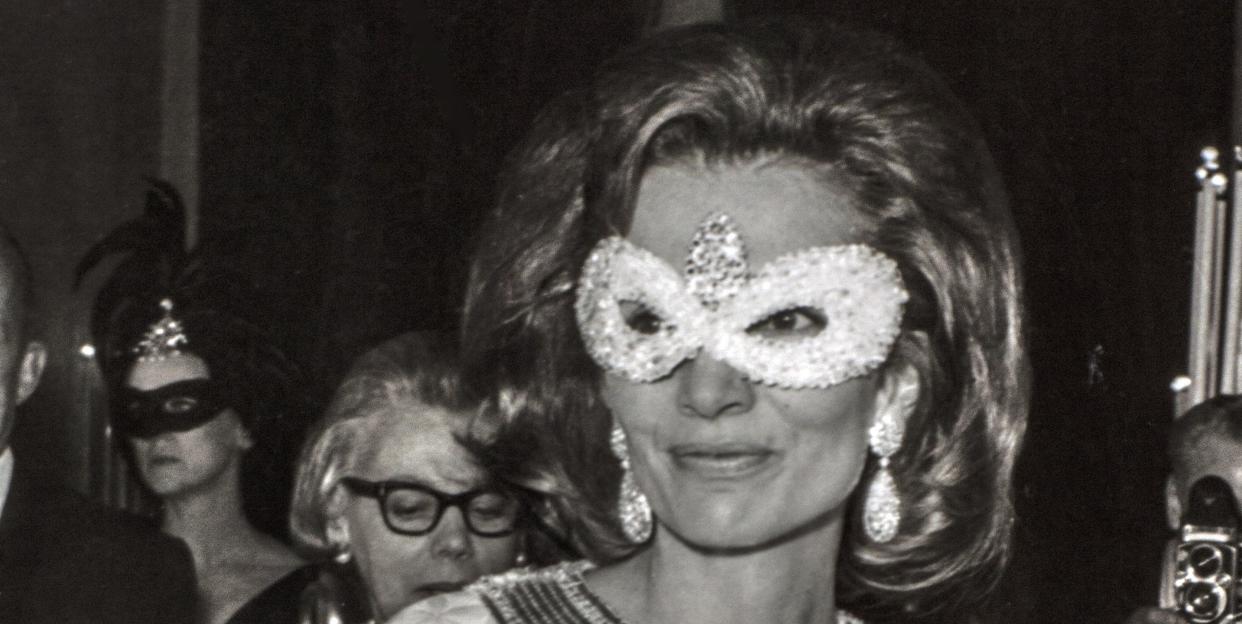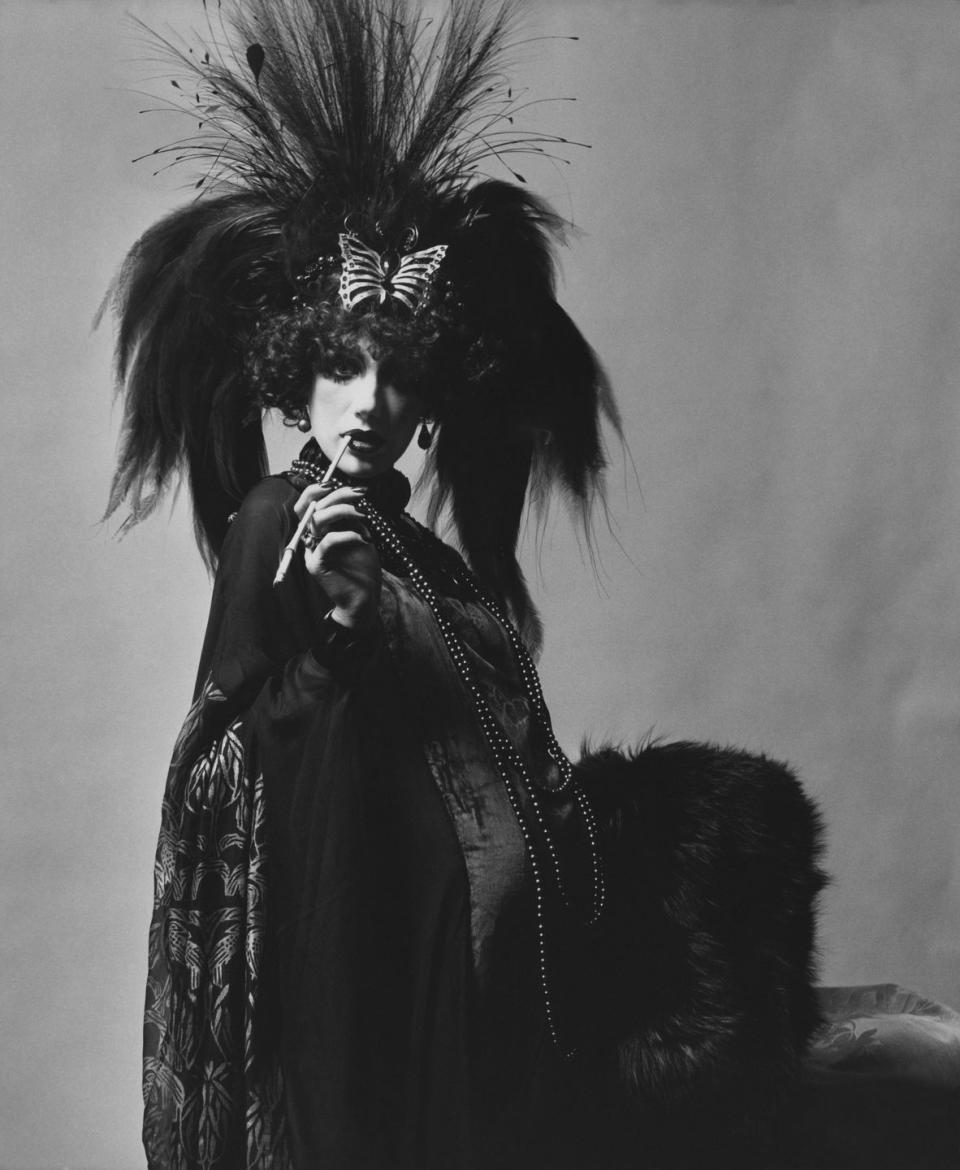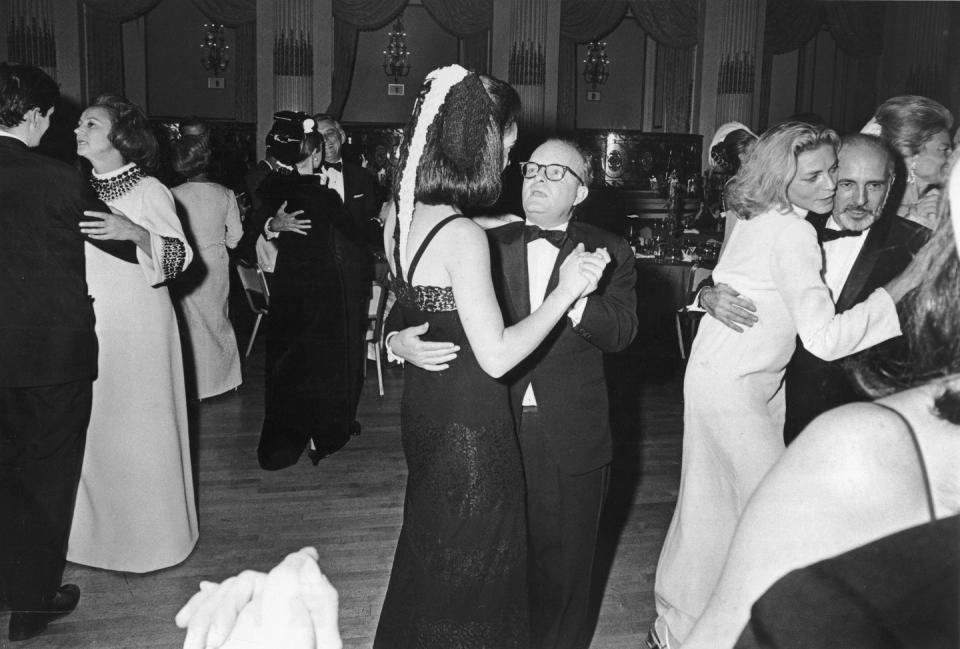Lessons From Two Legendary Parties: Capote’s Black and White Ball and the Rothschild Surrealist Ball

What's the key to throwing a memorable party—one that'll have guests talking long after it winds down, with non-attendees imbued with envy? The blueprint to true soirée prestige can be found in history, if one only looks to the two of the most legendary society parties in history.
On December 12, 1972, the gorgeous and glamorous made their way into Château de Ferrières just 26 km east of Paris for the Rothschild family's legendary Surrealist Ball. On the night of the event, guests got to experience the iconic space in its splendor with the only requirement to adhere by a dress code which read, “black tie, long dresses, and surrealist heads.”
What did this obscure dress code mean? To Audrey Hepburn, it meant showing up in a red gown, neck clad with multiple strings of pearls, and head encased within a bird cage. Perfumer Helene Rochas interpreted it as having a gramophone ascend from atop her head. Salvador Dali, the master of Surrealism himself, accessorized with several deformed plastic dolls. Baroness Marie-Helene de Rothschild, the hostess of the evening, dressed as a fallen stag with a mask adorned with tears made out of glistening diamonds. Among the 150 guests in attendance, several members of royal families and business scions also indulged in the otherworldly affair. For those hosting this season, no matter if it's a grand ball or an intimate dinner, here’s the first takeaway: set a stellar dress code. It’ll test your guests’ dedication to holiday cheer—not to mention, the pictures will be exceptional.

But, there must be more. The Rothschilds understood that if they were going to impose a strict dress code on guests, they’d have to make sure every minute detail of the event followed the theme (their Proust ball that took place just a year before proved this, as well). Thus, the whole party seemed to be a non-stop theatrical affair. Invitations were printed backwards so guests had to hold the text to a mirror to read it. The moment folks arrived, the front of the chateau was floodlit as if on fire. Once inside, they were met with footmen dressed as cats pawing at one another. Some even acted as though they were deep slumber on the staircase.
The dining tables also showcased the concept: plates covered in fur; food served on mannequin corpses; taxidermy tortoises used as centerpieces. This is where lesson number two comes in. As a host or hostess, pay acute attention to detail. If you’re going to throw a themed party, don’t go 50 percent on decor. Go all out. It’ll encourage guests to get into a festive headspace, and, after all, the best parties are the ones with a point of view.

But, perhaps you want to throw a party with the same amount of glamour, sans artsy peacocking. Six years earlier, on November 28, 1966, Truman Capote threw the legendary Black and White ball within the walls of the Plaza Hotel in honor of his friend Kay Graham. More than 500 people attended this party donning their finest black-tie attire and masquerade masks. But, this wasn’t any ordinary society party. It was a first of its kind, when folks like New York socialite Babe Paley were seen in the same room as artists like Andy Warhol. Blue bloods with intellectuals and artists in one room, enjoying the endless flow of the evening's champagne.
For a third and final lesson inspired by these grand soirees is to mix up your guest list. Now, some folks may raise an eyebrow to this, as it's always been taught to invite guests that you know may mingle well with another. But, as proven by Capote, it's never a bad idea to meld social groups together every once in a while. After all, you wouldn’t want to be at a party or sit next to the same group of people at dinner time and time again, would you? Odds are, your guests wouldn't, either.
You Might Also Like

